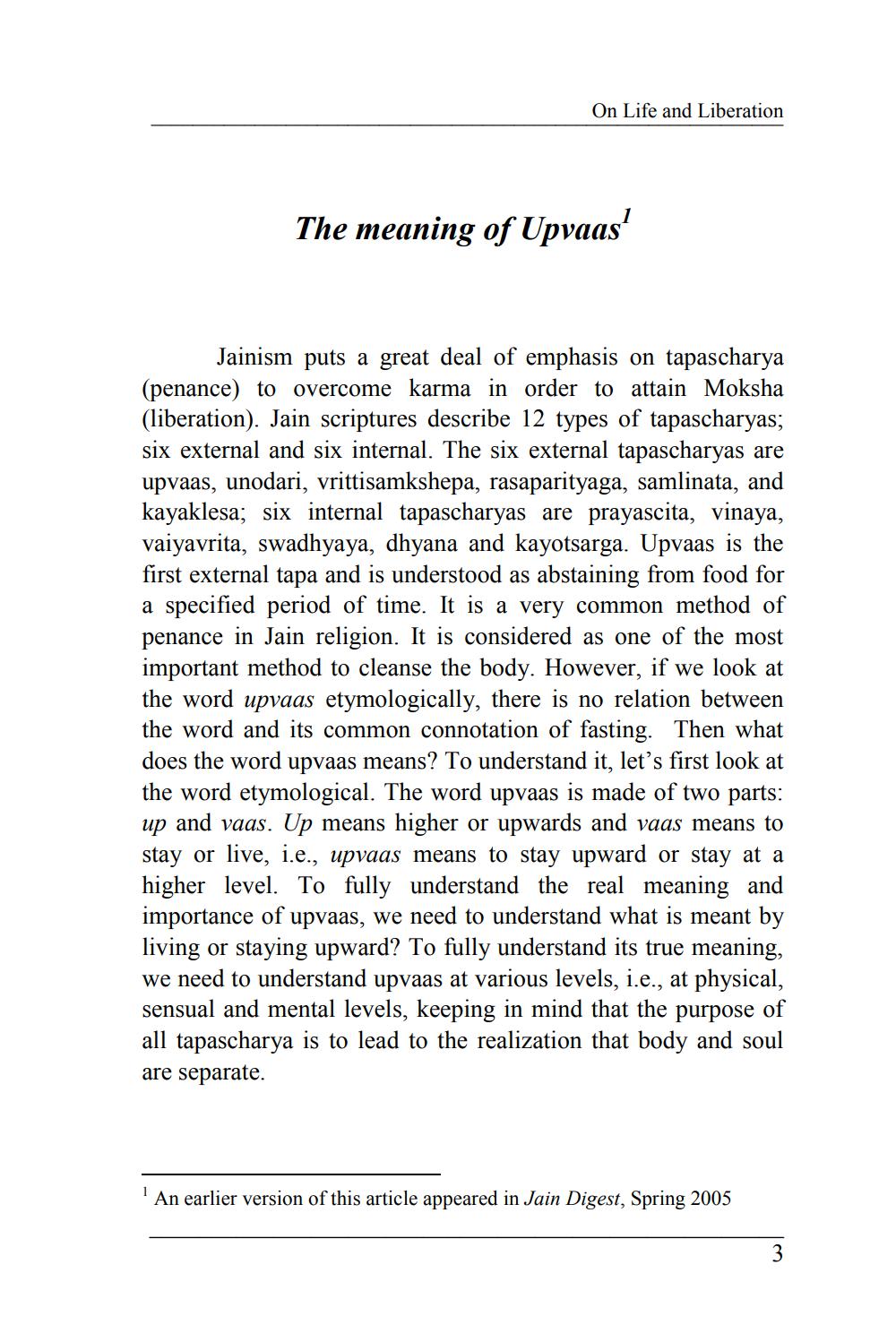Book Title: On Life and Liberation Author(s): Mukesh Chhajer Publisher: Mukesh Chhajer View full book textPage 9
________________ On Life and Liberation The meaning of Upvaas" Jainism puts a great deal of emphasis on tapascharya (penance) to overcome karma in order to attain Moksha (liberation). Jain scriptures describe 12 types of tapascharyas; six external and six internal. The six external tapascharyas are upvaas, unodari, vrittisamkshepa, rasaparityaga, samlinata, and kayaklesa; six internal tapascharyas are prayascita, vinaya, vaiyavrita, swadhyaya, dhyana and kayotsarga. Upvaas is the first external tapa and is understood as abstaining from food for a specified period of time. It is a very common method of penance in Jain religion. It is considered as one of the most important method to cleanse the body. However, if we look at the word upvaas etymologically, there is no relation between the word and its common connotation of fasting. Then what does the word upvaas means? To understand it, let's first look at the word etymological. The word upvaas is made of two parts: up and vaas. Up means higher or upwards and vaas means to stay or live, i.e., upvaas means to stay upward or stay at a higher level. To fully understand the real meaning and importance of upvaas, we need to understand what is meant by living or staying upward? To fully understand its true meaning, we need to understand upvaas at various levels, i.e., at physical, sensual and mental levels, keeping in mind that the purpose of all tapascharya is to lead to the realization that body and soul are separate. An earlier version of this article appeared in Jain Digest, Spring 2005Page Navigation
1 ... 7 8 9 10 11 12 13 14 15 16 17 18 19 20 21 22 23 24 25 26 27 28 29 30 31 32 33 34 35 36 37 38
